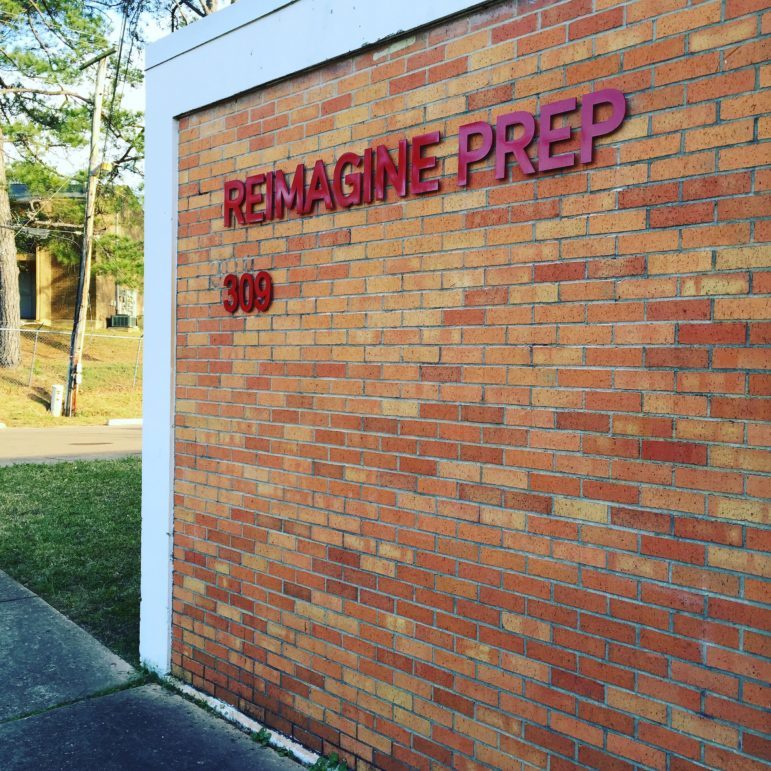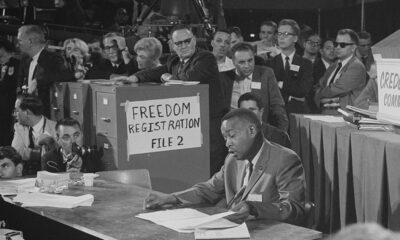Mississippi Today
Pandemic is just one factor in chronic absenteeism

Post-pandemic absenteeism is declining in Mississippi schools, but kids are still missing more school than the pre-COVID days. At many schools, more than a third of all students are missing 18 days a year or more.
Nationwide, the COVID-19 pandemic seems to mark the point when absenteeism rates in public schools went from bad to worse. The numbers tell the same story in Mississippi. Though the pandemic is a causal factor, educators identified a myriad of reasons — from anxiety to socioeconomic struggles — as to why Mississippi’s public school students seem to be missing more school.
The Mississippi Department of Education defines chronic absenteeism as missing 10% of the school year or more — this works out to roughly two days a month, or 18 days in a year. In the 2022-23 school year, at nearly half of all school districts in Mississippi, 25% or more of the student population was chronically absent.
“Research says chronic absenteeism could impact students from reaching early learning milestones, can be a predictor for early dropout prior to graduation, and overall poor academic performance,” Armerita Tell, the Mississippi Department of Education’s director of the Office of Compulsory School Attendance and Dropout Prevention, said in an email. “The outcomes are not typical for all children, but the research points to the aforementioned top outcomes.”
In Mississippi, statewide absenteeism levels peaked in the 2021-2022 school year at 28%. Those numbers fell to 23.9% the following school year, indicating progress. But despite this recovery, those numbers do not come close to pre-COVID years like the 2018-2019 school year, when 13.1% of students were chronically absent.
Jasmine Thornton serves as managing director of Family and Community Engagement for RePublic Schools, which operates four charter schools in the Jackson area. After ReImagine Prep saw absenteeism rates near 40% after the 2022-23 school year, she spearheaded an effort to understand the reasons for such high rates of absenteeism and to find solutions to combat it.
One thing that became apparent was the pandemic had exacerbated the challenges that working class families faced in making sure their kids were making it to school.
“What I noticed is that coming out of COVID — because we serve working class families — a lot of kids became latchkey kids a little earlier,” she said.
Latchkey kids is a colloquial term to describe students who enter or leave home unaccompanied, most commonly because their parents are at work. ReImagine Prep serves students between fifth and eighth grade.
“Parents were going to work earlier than kids were going to school. So, we were entrusting that 10-year-olds are responsible enough to get themselves up and get themselves on the bus as well as younger siblings — that’s a lot of responsibility,” she said.
There is a well-established connection between socioeconomic status and chronic absenteeism. ReImagine primarily serves students from economically disadvantaged families.
Thornton also cited other factors, like reduced enthusiasm among some children for attending school as a result of heightened social anxiety. Because of COVID-19, many students lost the caregivers who would usher them out the door in the morning.

To address high rates of chronic absenteeism and to try to mitigate the outcomes associated with it, educators and administrators at ReImagine Prep are exploring a myriad of options, like Saturday school.
“We’ve had to be very creative. We started this whole, ‘You missed instruction? You just don’t get to miss it — you got Saturday school’,” she said. “I’m conducting home visits on chronically absent kids.”
In those home visits, Thonrnton often learns that food disparities or access to the right clothes can be what keeps kids at home. For kids who miss the bus in the morning, the school will run a second bus, when possible. Though official numbers have not been released, Thornton said ReImagine Prep has reduced chronic absenteeism by about 20%, to nearly 20% in the 2023-24 school year.
Union Public School District in east central Mississippi served 965 students in the 2022-23 school year. The district saw increases in absenteeism after the pandemic but posted the lowest absenteeism rate in the state in the 2022-23 school year at 10.78%.
While being a relatively small district helps, Superintendent Tyler Hansford pointed to other factors, like a large number of veteran teachers and strong community ties, that help make such numbers possible in his district.
“If we have a student that’s absent, most of the time, the parents will reach out to the teacher ahead of time and say, ‘Hey, we’re gonna be out for whatever reason.’ And the teachers make sure that they’re taken care of,” he said. “It’s really just about those relationships that I think our staff members have with our school community and community at large.”
Hansford noted that the district ties attendance to participation in extracurricular activities like sports and other school activities, as a means of incentivizing students to attend. The front offices call families to check in on students who have been absent — more often than not, absences are health related.
Though the pandemic had a significant impact on attendance at Union Public School District, he believes that open communication channels between the school and families was the key to bouncing back so quickly.
Jerica Thames, principal of Union Middle School, which posted a 6.20% abseteeism rate in the 20-22-23 year, was a teacher during the pandemic. She says that the pandemic had a significant hand in reminding parents in her classroom why it’s important for kids to be in the classroom, after they had to shoulder some of the burden of teaching for a while.
“That’s when they found a new respect for teachers, because they had to do a lot of teaching at home,” Thames said. “So they knew as well that the best place for their child to be was in the classroom.”
Statewide, the Mississippi Department of Education is continuing its push for more awareness among both parents and educators regarding the role that absenteeism plays in the success of their students through regularly holding regional training and programming.
This article first appeared on Mississippi Today and is republished here under a Creative Commons license.![]()
Did you miss our previous article...
https://www.biloxinewsevents.com/?p=368204
Mississippi Today
1964: Mississippi Freedom Democratic Party was formed
April 26, 1964

Civil rights activists started the Mississippi Freedom Democratic Party to challenge the state’s all-white regular delegation to the Democratic National Convention.
The regulars had already adopted this resolution: “We oppose, condemn and deplore the Civil Rights Act of 1964 … We believe in separation of the races in all phases of our society. It is our belief that the separation of the races is necessary for the peace and tranquility of all the people of Mississippi, and the continuing good relationship which has existed over the years.”
In reality, Black Mississippians had been victims of intimidation, harassment and violence for daring to try and vote as well as laws passed to disenfranchise them. As a result, by 1964, only 6% of Black Mississippians were permitted to vote. A year earlier, activists had run a mock election in which thousands of Black Mississippians showed they would vote if given an opportunity.
In August 1964, the Freedom Party decided to challenge the all-white delegation, saying they had been illegally elected in a segregated process and had no intention of supporting President Lyndon B. Johnson in the November election.
The prediction proved true, with white Mississippi Democrats overwhelmingly supporting Republican candidate Barry Goldwater, who opposed the Civil Rights Act. While the activists fell short of replacing the regulars, their courageous stand led to changes in both parties.
This article first appeared on Mississippi Today and is republished here under a Creative Commons Attribution-NoDerivatives 4.0 International License.![]()
Mississippi Today
Mississippi River flooding Vicksburg, expected to crest on Monday
Warren County Emergency Management Director John Elfer said Friday floodwaters from the Mississippi River, which have reached homes in and around Vicksburg, will likely persist until early May. Elfer estimated there areabout 15 to 20 roads underwater in the area.
“We’re about half a foot (on the river gauge) from a major flood,” he said. “But we don’t think it’s going to be like in 2011, so we can kind of manage this.”
The National Weather projects the river to crest at 49.5 feet on Monday, making it the highest peak at the Vicksburg gauge since 2020. Elfer said some residents in north Vicksburg — including at the Ford Subdivision as well as near Chickasaw Road and Hutson Street — are having to take boats to get home, adding that those who live on the unprotected side of the levee are generally prepared for flooding.



“There are a few (inundated homes), but we’ve mitigated a lot of them,” he said. “Some of the structures have been torn down or raised. There are a few people that still live on the wet side of the levee, but they kind of know what to expect. So we’re not too concerned with that.”
The river first reached flood stage in the city — 43 feet — on April 14. State officials closed Highway 465, which connects the Eagle Lake community just north of Vicksburg to Highway 61, last Friday.

Elfer said the areas impacted are mostly residential and he didn’t believe any businesses have been affected, emphasizing that downtown Vicksburg is still safe for visitors. He said Warren County has worked with the U.S. Army Corps of Engineers and the Mississippi Emergency Management Agency to secure pumps and barriers.
“Everybody thus far has been very cooperative,” he said. “We continue to tell people stay out of the flood areas, don’t drive around barricades and don’t drive around road close signs. Not only is it illegal, it’s dangerous.”
NWS projects the river to stay at flood stage in Vicksburg until May 6. The river reached its record crest of 57.1 feet in 2011.




This article first appeared on Mississippi Today and is republished here under a Creative Commons Attribution-NoDerivatives 4.0 International License.![]()
Mississippi Today
With domestic violence law, victims ‘will be a number with a purpose,’ mother says
Joslin Napier. Carlos Collins. Bailey Mae Reed.
They are among Mississippi domestic violence homicide victims whose family members carried their photos as the governor signed a bill that will establish a board to study such deaths and how to prevent them.
Tara Gandy, who lost her daughter Napier in Waynesboro in 2022, said it’s a moment she plans to tell her 5-year-old grandson about when he is old enough. Napier’s presence, in spirit, at the bill signing can be another way for her grandson to feel proud of his mother.
“(The board) will allow for my daughter and those who have already lost their lives to domestic violence … to no longer be just a number,” Gandy said. “They will be a number with a purpose.”
Family members at the April 15 private bill signing included Ashla Hudson, whose son Collins, died last year in Jackson. Grandparents Mary and Charles Reed and brother Colby Kernell attended the event in honor of Bailey Mae Reed, who died in Oxford in 2023.
Joining them were staff and board members from the Mississippi Coalition Against Domestic Violence, the statewide group that supports shelters and advocated for the passage of Senate Bill 2886 to form a Domestic Violence Facility Review Board.
The law will go into effect July 1, and the coalition hopes to partner with elected officials who will make recommendations for members to serve on the board. The coalition wants to see appointees who have frontline experience with domestic violence survivors, said Luis Montgomery, public policy specialist for the coalition.
A spokesperson from Gov. Tate Reeves’ office did not respond to a request for comment Friday.
Establishment of the board would make Mississippi the 45th state to review domestic violence fatalities.
Montgomery has worked on passing a review board bill since December 2023. After an unsuccessful effort in 2024, the coalition worked to build support and educate people about the need for such a board.
In the recent legislative session, there were House and Senate versions of the bill that unanimously passed their respective chambers. Authors of the bills are from both political parties.
The review board is tasked with reviewing a variety of documents to learn about the lead up and circumstances in which people died in domestic violence-related fatalities, near fatalities and suicides – records that can include police records, court documents, medical records and more.
From each review, trends will emerge and that information can be used for the board to make recommendations to lawmakers about how to prevent domestic violence deaths.
“This is coming at a really great time because we can really get proactive,” Montgomery said.
Without a board and data collection, advocates say it is difficult to know how many people have died or been injured in domestic-violence related incidents.
A Mississippi Today analysis found at least 300 people, including victims, abusers and collateral victims, died from domestic violence between 2020 and 2024. That analysis came from reviewing local news stories, the Gun Violence Archive, the National Gun Violence Memorial, law enforcement reports and court documents.
Some recent cases the board could review are the deaths of Collins, Napier and Reed.
In court records, prosecutors wrote that Napier, 24, faced increased violence after ending a relationship with Chance Fabian Jones. She took action, including purchasing a firearm and filing for a protective order against Jones.
Jones’s trial is set for May 12 in Wayne County. His indictment for capital murder came on the first anniversary of her death, according to court records.
Collins, 25, worked as a nurse and was from Yazoo City. His ex-boyfriend Marcus Johnson has been indicted for capital murder and shooting into Collins’ apartment. Family members say Collins had filed several restraining orders against Johnson.
Johnson was denied bond and remains in jail. His trial is scheduled for July 28 in Hinds County.
He was a Jackson police officer for eight months in 2013. Johnson was separated from the department pending disciplinary action leading up to immediate termination, but he resigned before he was fired, Jackson police confirmed to local media.
Reed, 21, was born and raised in Michigan and moved to Water Valley to live with her grandparents and help care for her cousin, according to her obituary.
Kylan Jacques Phillips was charged with first degree murder for beating Reed, according to court records. In February, the court ordered him to undergo a mental evaluation to determine if he is competent to stand trial, according to court documents.
At the bill signing, Gandy said it was bittersweet and an honor to meet the families of other domestic violence homicide victims.
“We were there knowing we are not alone, we can travel this road together and hopefully find ways to prevent and bring more awareness about domestic violence,” she said.
This article first appeared on Mississippi Today and is republished here under a Creative Commons Attribution-NoDerivatives 4.0 International License.
-

 News from the South - Florida News Feed7 days ago
News from the South - Florida News Feed7 days agoJim talks with Rep. Robert Andrade about his investigation into the Hope Florida Foundation
-

 News from the South - Alabama News Feed5 days ago
News from the South - Alabama News Feed5 days agoPrayer Vigil Held for Ronald Dumas Jr., Family Continues to Pray for His Return | April 21, 2025 | N
-

 News from the South - Florida News Feed5 days ago
News from the South - Florida News Feed5 days agoTrump touts manufacturing while undercutting state efforts to help factories
-

 Mississippi Today6 days ago
Mississippi Today6 days ago‘Trainwreck on the horizon’: The costly pains of Mississippi’s small water and sewer systems
-

 News from the South - Texas News Feed6 days ago
News from the South - Texas News Feed6 days agoMeteorologist Chita Craft is tracking a Severe Thunderstorm Warning that's in effect now
-

 News from the South - Arkansas News Feed7 days ago
News from the South - Arkansas News Feed7 days agoAs country grows more polarized, America needs unity, the ‘Oklahoma Standard,’ Bill Clinton says
-

 News from the South - Missouri News Feed23 hours ago
News from the South - Missouri News Feed23 hours agoMissouri lawmakers on the cusp of legalizing housing discrimination
-

 News from the South - Florida News Feed5 days ago
News from the South - Florida News Feed5 days agoFederal report due on Lumbee Tribe of North Carolina’s path to recognition as a tribal nation
















































